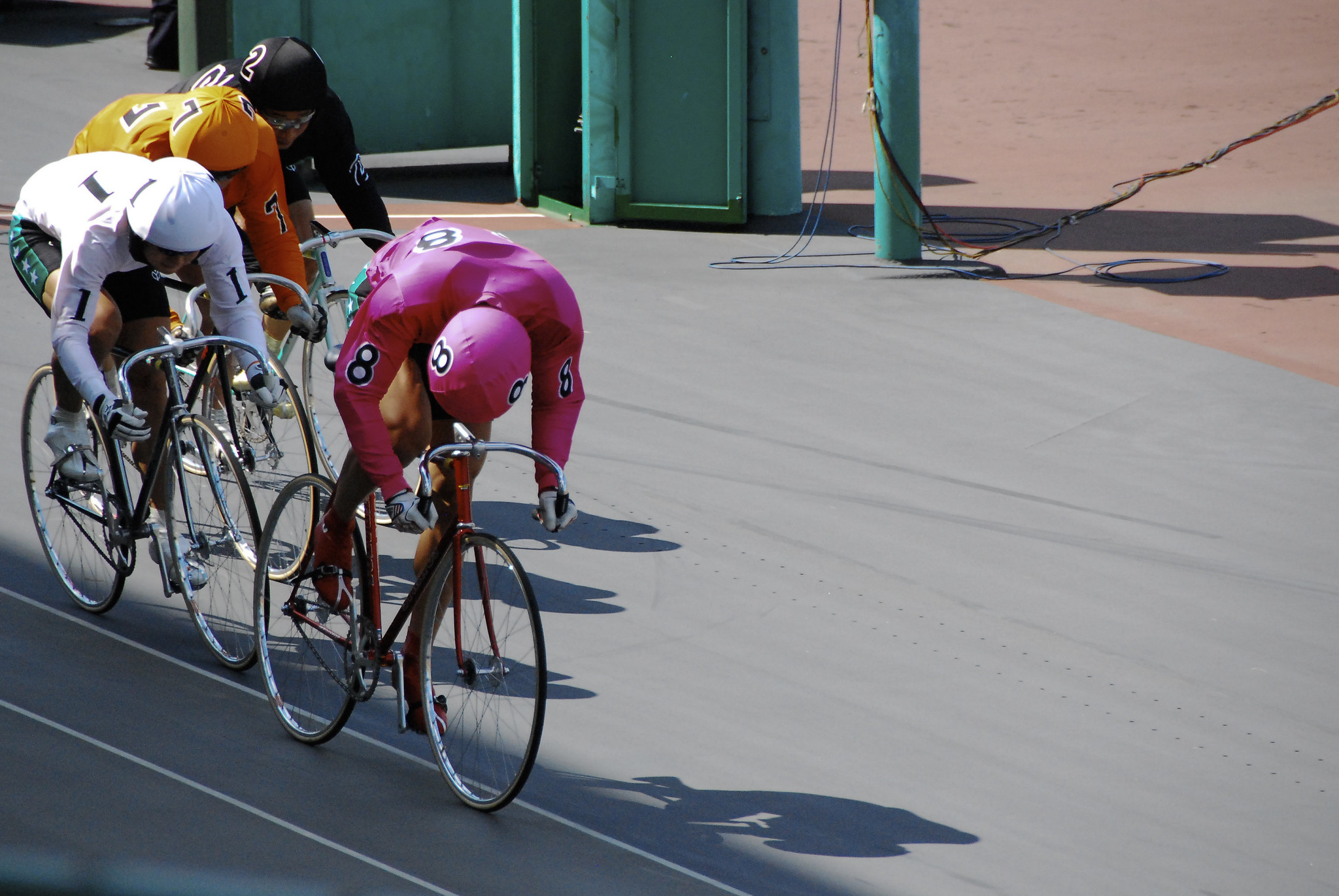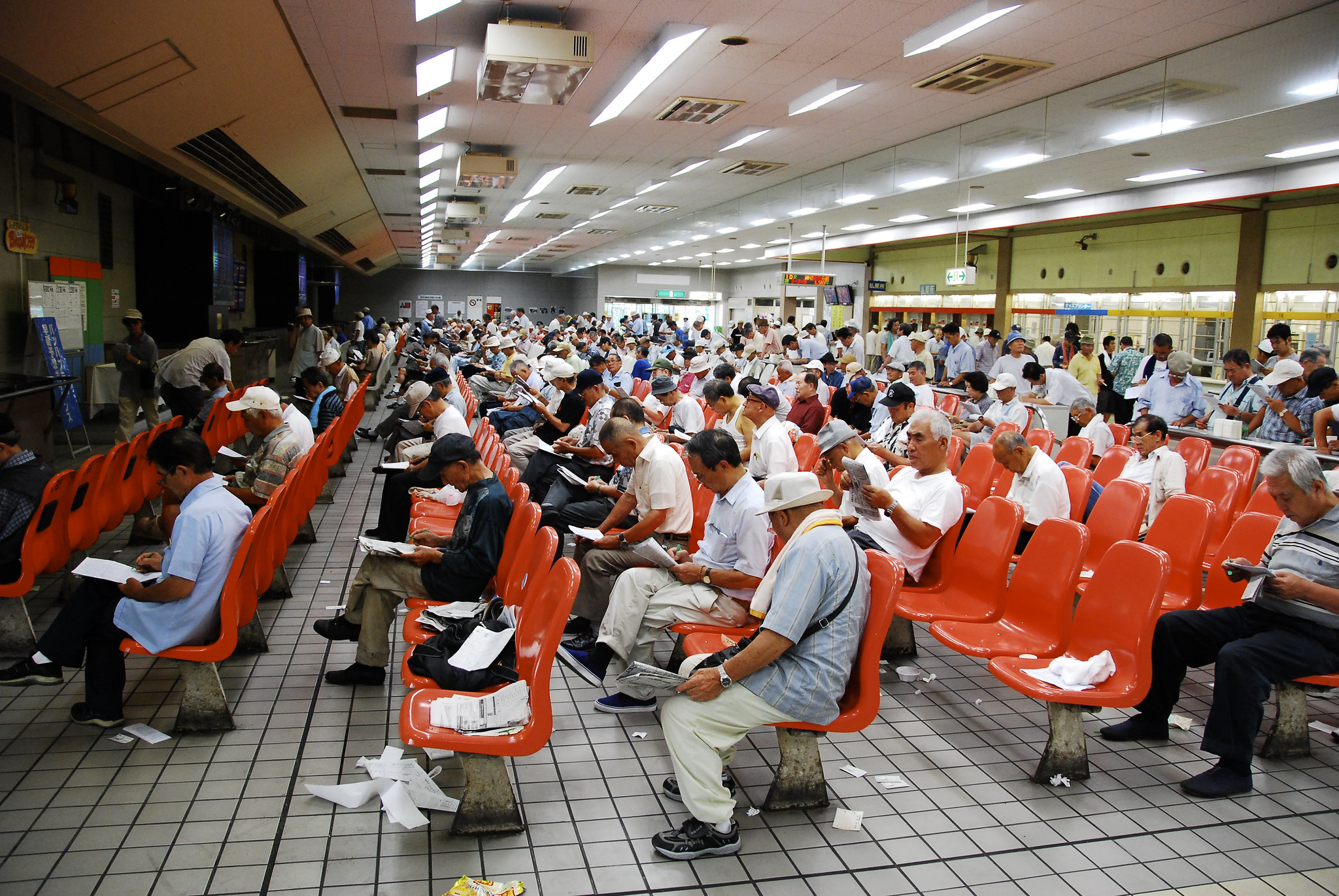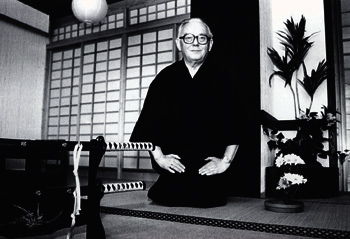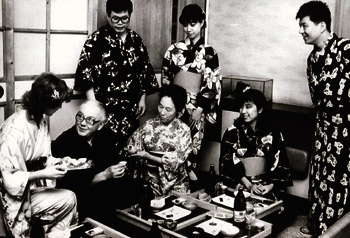Ōmiya Keirin
So on my last day in Japan i ventured out to see a Keirin race somewhere on the finges of the Tokyo metropolis (big thanks to Fumi for figuring this out for me). Apparently Keirin has made it to become an olympic discipline a while ago, which is kind of interesting insofar that keirin in not really a sport but a form of gambling. it is like horse racing but then the horses are substituted with bicycles and since bicycles do not move by themselves the jockeys (not the similarities in headgear and outfit) have to do the pedalling. so in essence you can place bets on humans and then watch them race against each other.
The race format (at least on thursday in Ōmiya) is fairly straightforward: 4 laps on a concrete race track, the first three of them behind a pacer and when the bell rings for the final lap the 9 riders battle it out between them (sometimes using elbows). you can either place bets on first second third combinations or you can place bets on fist and second combinations.
4 rounds of 400m or so may not seem like much but if you consider that this spectacle takes place in early afternoon in august in an open air stadium (with 35 degrees celsius and more in the shadows), then you got to admire these riders for even making it to the finish (plus this makes those american track cyclists who arrived in peking wearing face masks look like complete sissies)

Not that anybody in the public really cares about the riders, for the public they are just the numbers that they wear on their brightly colored jerseys. Most of the gamblers dont even care enough to actually watch the race, instead they stay in a giant air conditioned hall where they can chovienenltly place their bets and watch – without much display of emotion – the race results on overhead screens.

The gamblers are a strangely interesting mix, especially when contrasted with the teenager and salarymen dominated insanity of central Tokyo: 99% male (i think i saw three women that did not work at the racetrack), at any given point in time half of them have a cigarette in their mouth and literally nobody carries a mobile-phone. The whole place felt like some kind of retired male working class heaven complete with 100yen entry fee, an endless supply of cold green tea from machines, cheap and good (at least the teppanyaki) food and the promise of placing a winning bet and going home rich. From that point of view Keirin makes much more sense than that other japanese ‘gambling’ obsession Pachinko (which is simply insane and completely lacks the social interaction taking place around the keirin track).

More pictures in this set on my flickr account.


